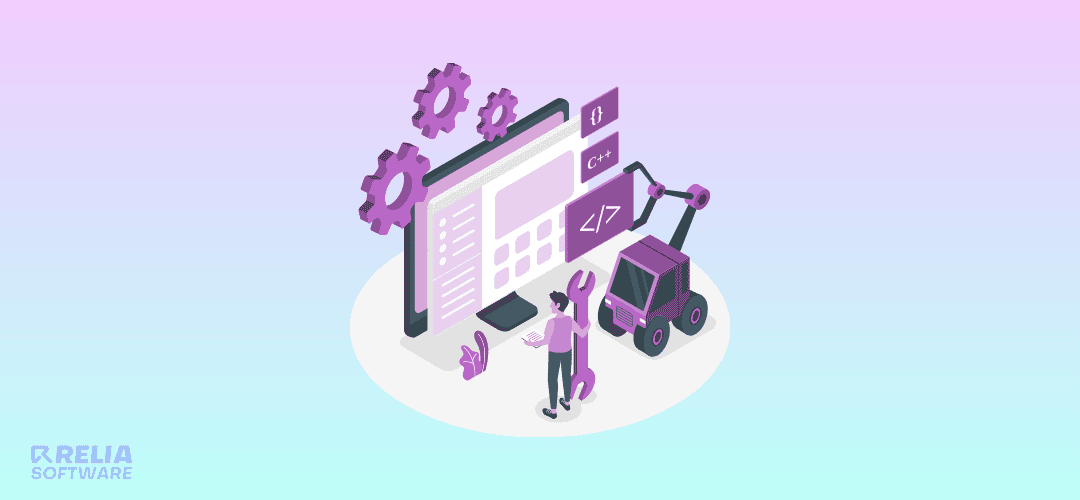In today's rapidly evolving technological landscape, software development has become a critical aspect of business operations. DevOps, a set of practices that aim to unify software development (Dev) and IT operations (Ops), has gained immense popularity due to its ability to accelerate the development cycle and enhance collaboration.
However, as the digital world faces an increasing number of cyber threats, the need for robust security measures has become paramount. This has given rise to the concept of DevSecOps, which integrates security seamlessly into the DevOps process. This article delves into the world of DevSecOps, its significance, benefits, challenges, and best practices.
What is DevSecOps?
DevSecOps, a portmanteau of Development, Security, and Operations, is an evolution of the DevOps philosophy that emphasizes the importance of incorporating security practices into the entire software development lifecycle.
Unlike traditional approaches, where security is often an afterthought, DevSecOps aims to ensure that security is an integral part of the development process from the very beginning. This alignment of development, security, and operations teams enables organizations to create a culture of shared responsibility and proactive security measures.
Why Is DevSecOps Important in Software Development?
-
Early Detection and Mitigation of Vulnerabilities: DevSecOps promotes the identification of security vulnerabilities early in the development cycle. Automated testing and continuous monitoring enable developers to identify and address vulnerabilities before they escalate, reducing the likelihood of security breaches.
-
Faster Response to Threats: By integrating security practices into the development pipeline, organizations can respond quickly to emerging threats. Automated security testing, continuous monitoring, and real-time alerts enable rapid response and mitigation.
-
Enhanced Collaboration: DevSecOps encourages collaboration between development, security, and operations teams. This collaboration breaks down silos and ensures that security considerations are understood and implemented across all stages of development.
-
Compliance and Regulation Adherence: With stricter regulations governing data privacy and security, organizations must ensure compliance. DevSecOps provides a framework for implementing security controls that align with regulatory requirements.
-
Cost-Effective Security: Addressing security issues early in the development process is more cost-effective than trying to fix them post-production. DevSecOps reduces the potential financial and reputational costs associated with security breaches.
4 Key Steps to Seamlessly Integrate Security into DevOps
The integration of security into the DevOps framework doesn't have to be an arduous process. The real challenge often lies in the necessary shift in mindset and culture. Successfully implementing DevSecOps involves embedding security best practices into the development process. This can be effectively achieved through a four-step approach: (1) instigating a cultural transformation, (2) embracing automation, (3) establishing protocols, and (4) fostering continuous improvement. Let's delve into each of these steps for a comprehensive understanding of securing DevOps.
Step 1: Initiating Cultural Change from the Highest Levels
Encouraging teams to adopt a "security-first" mindset becomes notably easier when this approach is visibly demonstrated across the entire organization. Although such a security-centric mindset might not have been customary for most organizations historically, the significance of secure software has become increasingly apparent in recent times.
For any DevSecOps strategy to thrive, the impetus for organizational change must originate from the upper echelons of management. While encountering resistance from certain development teams during this shift in perspective is not uncommon, leaders within both the development and security domains can drive this new approach by adopting a mindset that inherently includes security.
Several avenues exist for leadership to enact top-down change, including:
- Showcasing instances where a DevSecOps approach could have precluded a security breach.
- Demonstrating a readiness to allocate time and resources to DevSecOps initiatives.
- Permitting teams to invest additional time in addressing security concerns, even if this results in initial delays.
The process commences with proactive initiation. As organizations embark on their journey, process and tool automation can swiftly follow suit, effectively minimizing obstacles in the DevOps security model.
Step 2: Embracing Automation
The successful implementation of DevSecOps hinges on the strategic utilization of automation and the incorporation of automated security measures whenever feasible. Security breaches often arise due to human error or oversights, making it unrealistic to rely solely on human decision-making for flawless code, system configuration, and pipeline processes. This is precisely where the role of automation becomes pivotal.
Automation stands as one of the most potent attributes of DevSecOps security tools, providing a plethora of advantages. These tools operate as essential extensions of both the security and DevOps teams. They facilitate swift implementation of changes and the identification of high-severity or previously unidentified vulnerabilities, all without necessitating additional hours from developers or security personnel. Among the functions automated tools offer, pipeline vulnerability scanning, Static Application Security Testing (SAST), open source library scanning, and more prominently feature.
The integration of security automation spans every stage of the DevOps lifecycle and development pipeline. Noteworthy points in the development process where security automation can be seamlessly integrated encompass:
Coding:
- Enforcing common security prerequisites like encryption and authentication through automated checks.
- Incorporating automated code reviews as part of regular agile sprints to maintain security standards.
Reviewing:
- Employing automated assessments to scrutinize code, contributing to software adhering to appropriate standards.
- Ensuring software meets security criteria through the aid of automation.
Testing:
- Conducting automated code scans using SAST and Software Composition Analysis (SCA) tools, as manual code analysis isn't as rapid.
- Concurrently executing automated security tests alongside functional and performance tests.
- Introducing automated penetration tests to identify security vulnerabilities in systems within each sprint and release cycle.
Deployment:
- Leveraging Infrastructure as Code (IaC) automated scripts to deploy software, reducing human errors.
- Employing automated cloud scripts to deploy containers to cloud environments or automate virtual machine deployment.
- Reliably deploying code to production-hosting environments through automated processes accessible via APIs.
Operations:
- Real-time automated scanning of log files to identify anomalies and trigger alerts.
- Implementing automated processes like real-time monitoring, intrusion detection, and compliance validation to detect vulnerabilities continuously.
- Regularly evaluating product reliability and security to detect vulnerabilities and prioritize resolutions.
The integration of security into the DevSecOps toolchain entails a blend of continuous security testing, cloud security practices, and process automation. Although this may appear intricate to those embarking on their DevSecOps journey, the substantial enhancement of organizational efficiencies swiftly comes to fruition.
Step 3: Establishing Protocols: Prioritize Simplicity and Stringency in Security Practices
Defining and implementing comprehensive security protocols is a cornerstone of successful DevSecOps integration.
The potency of security practices lies in their simplicity, although their effectiveness could be compromised if organizations fail to rigorously enforce them while adhering to DevOps security best practices. Security protocols that are clear, straightforward, and uncomplicated are not only easy to comprehend but also uncomplicated to put into action. Conversely, intricate and excessively demanding security protocols may deter the cultivation of a security-centric mindset among developers by creating unnecessary hindrances. Additionally, it's improbable that teams will retain intricate, multi-page security protocols in their entirety.
Security policies within an organization may encompass protocols such as:
- Authentication, permissions, regulations, and monitoring.
- Establishing minimum security standards for all projects.
- Management of encryption keys.
- Ciphers for encryption.
- Guidelines for password complexity.
- Written Information Security Program (WISP).
Given that most developers lack comprehensive training in securing code and may not consistently incorporate security in their design processes, the significance of security training becomes even more pronounced. In-house training, underscored by an ownership philosophy of "if you code it, you own it," serves to cultivate a security-first mindset within DevOps, paving the way for the evolution into DevSecOps.
The implementation of security measures can be streamlined to ensure simplicity and efficiency. In order to maintain high levels of efficiency, teams require regular training, while processes must be perpetually refined and enhanced.
Step 4: Fostering Continuous Improvement
The journey towards DevSecOps is a dynamic process that requires ongoing refinement. Continuous improvement entails a commitment to consistently assess and enhance security practices. This iterative approach allows organizations to adapt to emerging threats and challenges, ensuring that security measures remain up-to-date and effective.
Regularly analyzing security processes and their outcomes enables organizations to identify areas for enhancement. By incorporating feedback and insights gained from these assessments, development teams can fine-tune their security practices and maintain a proactive stance against evolving cyber threats.
Conclusion
The process of integrating security into the DevOps framework can be facilitated through a structured and strategic approach. By initiating a cultural transformation, embracing automation, establishing protocols, and fostering continuous improvement, organizations can seamlessly incorporate security best practices into their development process.
This proactive stance not only mitigates potential vulnerabilities but also ensures that security remains a fundamental aspect of software development. As the landscape of cyber threats evolves, the DevSecOps methodology stands as a robust solution to safeguarding digital assets and enhancing the overall resilience of software systems.
>>> Follow and Contact Relia Software for more information!
- Web application Development
- automation

